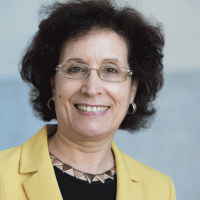Why is the Idea of Female Western Jihadists a Mystery?


“It remains a mystery what motivated the young French woman to stray from her suburban upbringing into the murderous realm of terrorists. No one interviewed so far has said there were hints of extremism in the Aitboulahcen they knew,” the Washington Post wrote on November 20, 2015. Hasna Aitboulahcen, a 26-year-old ISIS recruit, was among the terrorists associated with the November 13 Paris attacks that killed 130 people—the deadliest round of violence in France since World War II. “’She loved life,’ Aitboulahcen’s former classmate and childhood friend told the BBC. ‘… I don’t think she planned it. I think she was influenced.’”[1]
On December 6, 2015, President Obama mentioned another female jihadist living in the West during his high-profile speech to the nation. Tashfeen Malik is the woman accused of, along with her husband Syed Rizwan Farook, killing 14 people in a shooting in San Bernardino, California on December 2 at Farook’s place of work. Law enforcement officials have stated that Malik declared her allegiance to the Islamic State of Iraq and Syria (ISIS) on a social media account shortly before the attack.
There are other such examples, including the widely circulated images of women in the ISIS-affiliated al-Khansaa Brigade—the all-female moral “police force” established and led by a British woman—carrying AK47s, wearing suicide belts, and holding severed heads.
Why are such acts considered a “mystery” when the phenomenon of female jihadists—including Western female jihadists—is not new?
After the Paris attacks, a flurry of articles on the radicalization and recruitment of Western women sought to address this supposed “mystery.” Most of these articles attribute the “new” phenomenon to ISIS’s well-calculated dose of romanticism and promises of a glorious life that particularly target Western female adolescents. However, as interesting as they are in unraveling some of the ISIS tactics in recruiting and “using” young women, these accounts miss the paradox that Western female jihadists represent for the ISIS ideology; even while it is serving its propaganda apparatus, this use of women destroys the group’s ideals of “pure and submissive” women in a male-dominated society. The paradox is also bound to dissuade some potential Western recruits (of both sexes) from traveling to ISIS-controlled territories.
The jihadi ideology that ISIS ascribes to is based on “pure women for a pure society.” This so-called purity is the strongest guarantee for the continuous generation of the jihadi paradigm. When ISIS’s women become suicide bombers, they not only achieve equality as prestigious martyrs, but also by diverting focus from their primary role of producing future jihadists, they destroy the very “purity” aspect of the jihadi ideology. In other words, the idea of female martyrs reveals a serious breach in the ISIS ideology, showing its short-sightedness and limits. But how is this so?
This jihadi ideology is partly based on the notion that Western women’s rights (as a token of egalitarian Western societies) has failed, which jihadists believe justifies what they see as the “moral decline” of these societies. ISIS points to its ability to recruit Western women as proof that gender equality has failed and that Western women are seeking an alternative—which they find in the ISIS ideology. This argument, in turn, is used by ISIS propaganda to discredit the gains of women’s rights movements in Muslim-majority countries and, more importantly, to discredit men in Muslim-majority countries as incapable of controlling their women.
Why are Western women so important for the jihadi ideology? Two main reasons may be advanced: first, the recruitment of women from Western countries is more “glorifying” for ISIS than their recruitment from Muslim-majority countries. In the latter case, this recruitment is perceived as easier and almost taken for granted because women are generally expected to comply within such space-based patriarchies. In the former case, however, this recruitment of Western women is thought to be a victory over the West. Because women are crucial for the jihadi project, recruiting Western women is seen as a way of humiliating the West and so-called “gray zones” (areas inhabited by Western Muslims who do not adhere to the jihadi ideology).
Second, involving Western women in violence is crucial for jihadi propaganda and recruitment. The recent San Bernardino case could be very revealing if it turns out that Tashfeen Malik radicalized her husband as some analysts suspect. Although they constitute a small portion of women jihadists, Western female fighters are more visible because they make greater use of blogs and are far more active on social media. This visibility could, in turn, lead to a greater unraveling of jihadi propaganda. ISIS pushes for Western women killers but, unlike in the case of male jihadists, it takes time for ISIS to acknowledge female jihadism as the San Bernardino case has shown.
These two reasons are problematic for the jihadi ideology. Jihadi ideologues make it clear that women are to be restricted to traditional domestic roles in an ideal Islamic society. This in itself is bound to raise questions given that Western women recruits are presumably educated and aware of their rights and, therefore, can be assumed to be less willing to acquiesce to such a lifestyle. Furthermore, because the jihadi discourse on women’s roles is bound to change, this enhances the gender dilemma and shows the limits of a global jihadi discourse—which will ultimately impact the number of Western female jihadists.
The fact that Hasna Aitboulahcen did not live a religious life prior to the Paris attacks also contradicts the basic tenets of jihadi ideology and throws further suspicion on the jihadi project. In a sense, the Paris and San Bernardino cases shook the gender stereotypes on which ISIS’s jihadism is based and created a long-term dilemma in their gender ideology, with both social and psychological ramifications: How is it possible to combine a “libertine” with a “pure” life when you are a female ISIS recruit in the West? How does one adopt the “male” deceptive tactics of “drinking wine” and “socializing with the infidels” and remain “pure”? These and similar questions indicate that while the use of Western women is an important component of the global jihadi ideology, this use is now becoming one of its weakest aspects.
According to a 2015 Institute for Strategic Dialogue report[2], the number of Western foreign fighters joining ISIS has increased considerably since the declaration of the caliphate in July 2014 and women constitute some 10 percent of these fighters. Foreign women have been coming from France in particular.
The number of foreign women fighters may change given the effect of the Aitboulahcen and Malik cases. Beyond the horrendous acts, a female at the forefront of a terrorist attack causes a serious breach in jihadi rhetoric and discourse, uncovering the deep dilemma that the jihadi ideology has with women and women’s visibility.
Indeed, beyond the surface reactions to the horror, the underlying long-term messages constitute a serious attack on the jihadi ideology and a serious fracture in jihadi propaganda. Aitboulahcen was described as a drug addict “who smoke and drank wine,” the very descriptions that many Salafists and jihadists attach to women’s rights advocates in Muslim-majority countries. Little is known about Malik, though additional details about her life continue to emerge.
In the long run, these cases will destabilize the idealized and internalized images of passive and religious Western jihadi women who never dare to perform in the public space and whose primary function is to stay home to produce and raise future jihadists.
Looking at the bigger picture, advancing women’s rights appears to constitute the first nail in the coffin for the jihadi ideology. Indeed, using the lens of women’s rights is the only way to break the jihadi ideology, which can happen through the destruction of jihadists’ retrograde views on women. The much-celebrated notion of “empowering women” is good but not enough. The ISIS ideology is one that can be dismantled only through a long-term counter-ideology at the heart of which is women’s rights.
The opinions expressed herein are those of the author and do not reflect those of the Wilson Center.
[1] https://www.washingtonpost.com/news/morning-mix/wp/2015/11/20/path-of-french-female-suicide-bomber-showed-little-signs-of-islamic-extremism/
[2] Hoyle, Carolyn, Bradford, Alexandra and Frenett, Ross, “Becoming Mulan? Female Western Migrants to ISIS,” Institute for Strategic Dialogue, http://www.strategicdialogue.org/ISDJ2969_Becoming_Mulan_01.15_WEB.PDF (2015)
Author

Senior Professor of Linguistics and Gender Studies, Sidi Mohamed Ben Abdellah University, Morocco

Middle East Program
The Wilson Center’s Middle East Program serves as a crucial resource for the policymaking community and beyond, providing analyses and research that helps inform US foreign policymaking, stimulates public debate, and expands knowledge about issues in the wider Middle East and North Africa (MENA) region. Read more

Explore More
Browse Insights & Analysis
How Education Can Empower Young Women in MENA

Empowering the Changemakers of Today: Young Women

